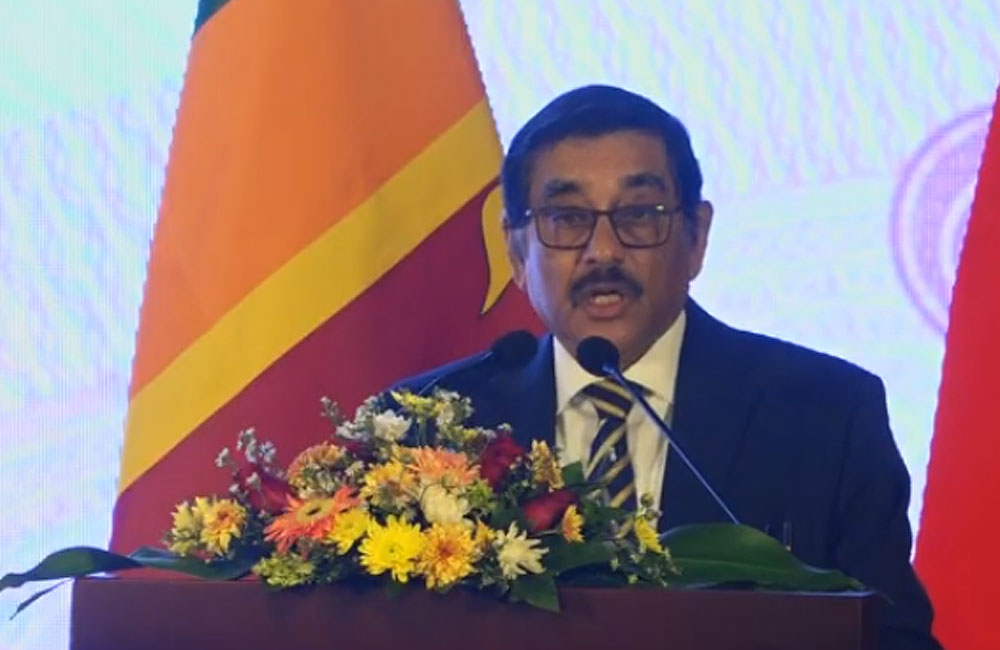In a decisive pivot away from dollar-dominant trade settlement, Central Bank of Sri Lanka (CBSL) Governor Dr. Nandalal Weerasinghe has championed the introduction of a direct renminbi (RMB) payment mechanism to streamline commerce between Sri Lanka and China.
Under the current model, Sri Lankan importers must convert rupees into U.S. dollars before ultimately settling in RMB incurring multiple exchange-rate risks and elevated transaction costs.
Dr. Weerasinghe argues that a direct RMB settlement route would eliminate these intermediary steps, delivering same-day fund transfers, lower processing fees and enhanced pricing stability in bilateral trade.
To enable this, the CBSL is exploring establishment of a dedicated RMB clearing bank in Sri Lanka effectively an offshore Chinese-authorised financial entity that allows local banks and enterprises to open RMB accounts, settle cross-border payments and conduct domestic RMB transactions without having to rely on foreign correspondent banks. Beijing’s push to expand its global RMB clearing network has already reached over 30 countries.
From a financial-analysis perspective, the implications are substantial. According to recent IMF research, connecting to an offshore RMB clearing bank can increase a country’s share of payments settled in RMB by 3 to 6 percentage points annually.
For Sri Lankaa country whose foreign exchange reserves and import-payments profile have been under strain amid its broader economic crisis—introducing direct RMB settlements could reduce reliance on the U.S. dollar, lower foreign-exchange conversion costs and bolster reserve diversification. Indeed, China’s ambassador in Colombo has already flagged that wider use of RMB may assist Sri Lanka’s recovery by reducing FX-risk and enhancing macro-economic resilience.
Beyond cost-and-time savings, the move carries deeper strategic and structural consequences. For example:
With imports from China estimated at several billion dollars annually, shifting a portion of those flows into RMB-denominated settlement could free up U.S. dollar reserves for other priorities (such as debt servicing or critical imports).
A direct-settlement route may encourage more Chinese investors and exporters to engage with Sri Lankan counterparties, given smoother payment infrastructure and reduced foreign-bank intermediaries. Governor Weerasinghe pointed to the dual benefit of trade facilitation and investor confidence.
On the risk side, Sri Lanka must guard against over-dependence on RMB or Chinese financial infrastructure. While reducing dollar-exposure is beneficial, it also raises questions about linkage to China’s monetary system, potential regulatory and liquidity constraints, and geopolitical implications.
Looking at Sri Lanka’s recent currency swap arrangements with China: In 2021, the CBSL drew down a RMB 10 billion bilateral swap with the People’s Bank of China (PBOC) to shore up foreign-exchange liquidity.
That episode highlights both the potential and the complexity of Chinese-currency linkages. A direct-settlement RMB clearing bank could reduce future reliance on emergency swap lines by enabling routine trade in RMB.
In summary: Sri Lanka’s push to enable direct RMB payments is a bold step in modernising its trade-settlement architecture and alleviating dollar-dependency.
Yet, it’s a strategic choice that comes with both considerable upside and non-trivial governance and risk implications. If implemented well, it could lower costs for importers and exporters, deepen Chinese-Sri Lankan financial integration, and contribute to FX-reserve stability.
But it will also require robust regulation, risk-management around currency and liquidity, and a clear strategic framework to ensure the move serves Sri Lanka’s broader economic interests rather than simply facilitating stronger Chinese financial influence.

Leave your comments
Login to post a comment
Post comment as a guest